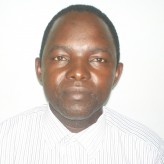Nairobi
We are pleased to report that all hydroponics units are installed and farmers are enjoying fresh fresh vegetables while using less resources like water,space and labour.Have attached the results in terms of targets,milestones,achievements,activities so far,lessons learned and challenges.
Expected Adoption: # of consumer/households, with a focus on the poor urban, benefitting from or directly involved in the project -supported innovation 45 hydroponics units have been installed in total to low income Urban farmers with family size of 4 and youths which result to feeding 180 consumers directly benefited from the project. 15 Unit were installed in the first phase while 30units in the second phse Notes.25 units were intalled to low income slum dweller families with 4 members per family and 20 units to schools and youth training centres. "Installed 45 hydro units in total, 15 in the first phase and 30 in the second phase, 180 Urban peolple are benefiting by eating nutritious vegetables from the project .And some owners of units are selling the surprus.
" Survey was done by asking family farmers to fill survey on how people in the family are consuming on a monthly basis whether they benefit from the produce.For the surplus of the produce sold farmers were given templates to fill in the amount of the produce sold and amount of cash got. We partnernered with County government ,ministry of agriculture and ministry of youths and schools to get acess to the families and youths
Hectares of land under improved practices as a result of our innovation "The projected hectares of land by the end of second phase are Vertical system : 18 m2*10units = 180 m2
Hydro wall : 12 m2*20units = 240 m2
Green houses. :80 m2*10units= 800 m2
Aquoponics : 80 m2*5units = 400 m2
Total Hectares improved/reclaimed=0.162 HA
" "Vertical system : 18 m2*10units installed
Hydro wall : 12 m2*20units installed
Green houses. : 80 m2*10units installed
Aquoponics :80 m2*5units installed
Total Hectares improved=0.162 HA improved
The improved hactares of land in the second phase are Vertical system : 18 m2*5units = 90 m2
Hydro wall : 12 m2*15units = 180 m2
Green houses. :80 m2*7units= 560 m2
Aquoponics : 80 m2*3units = 240 m2
Total Hectares improved/reclaimed=0.107 HA " Our agronomists assisted the farming families to record data:All units installed were recorded with coodinates and by name of beneficiries.In the farming family or youth group one coodinate is given per group or per family with clear evidence of area covered and number of people representing their families listed We conducted Site visits, and identified available spaces and resources. We also carried out installations of the systems that utilise less space,we also carried out more installations that require less space utilization and come up with more efficient units due to contionous improvement of the same systems.
Percentage increase in crop yields in urban areas "The Projected percentage increase in yield by the end of second phase will be Vertical system : 55%
Hydro wall : 45%
Green houses. :40%
" "Tabulated data of amount of produce under 18 m2 for vertical systems,12 m2 for hydro wall,80 m2 for green houses were analysed and compared to the reletaive production under the same area on soil. From the data collected in the second phase,the percentage increase in yield Vs soil farming under the same area realised is
Vertical system : 40%
Hydro wall : 35%
Green houses. :24% " We compared farmers yield production against documented production of the same unit area from farming families and schools we are working. We carried out site visits, Installation of the systems, agronomic support and consultancy.We also carried out data recording for different system under hydroponics and soil farming,the data was the compared,both for soil and hydroponics.
Water consumption reductions (by volume in L/year) as a result of utilization of the product "The projected water saved for the 45 units after the second phase will be Vertical:20,880L/Year*10unit=208,800L/year
Hydro wall: 12,000L/year* 20units = 240,000L/year
G/ houses:28,800L/year * 10units= 288,000L/year
Total volume of water saved =736,800L/year" "Tabulated data of amount of water use under 18 m2 for vertical systems,12 m2 for hydro wall,80 m2 for green houses were analysed and compared to the reletaive amount of water under the same area on soil. Water save d so far in the second phase Vertical:20,880L/Year * 5Unit=104,400L/year
Hydro wall: 12,000L/year* 15units = 180,000L/year
G/ houses:28,800L/year * 7units= 201,600L/year
Total water saved ?=486,000L/year " Our agronomist assisted farmers to record data which was compared against documented water use of the same unit area on soil. We Installed the most efficient systems that use less space and water. We also trained farmers on system running using less water, Repair and maintainance of systems
"Volume of Produce Grown
" "Vertical system : 240kgs*10units = 2,400kgs
Hydro wall 144kgs*20units = 2,880kgs
Green houses 1,680kgs*10units= 16,800kgs
Total amount of produce 22,080kgs or 22.08Tons
" " Tabulated data of volume of produce under 18 m2 for vertical systems,12 m2 for hydro wall,80 m2 for green houses were analysed and compared to the reletaive amount of water under the same area on soil documented results from ministry of Agriculture Amount of produce got so far in the second phase is Vertical system : 240kgs*5units = 1,200kgs
Hydro wall 144kgs*15units = 2,160kgs
Green houses 1,680kgs*7units= 11,760kgs
Total amount of produce 22,080kgs or 15.12Tons
" Our agronomist assisted farmers to record data :We compared farmers yield against documented data of same unit area We carried out installations, training on best management practices and consultancy. We carried out Monitoring and evaluation of the project progress of farmers and provison of agronomic support,data collection and analysis
Lessons Learned so far
"• An integrated approach to implementation of activities at household and community levels, as well as awareness and advocacy, increases impact of interventions. Originally, we planned to undertake household- and community-level activities in different areas of the Nairobi region. As project implementation proceeded, it was found that it was better to work with County Government, Ministry of Agriculture, Youth and Education. It was also found useful to target awareness activities in these same areas to reinforce the group-based work being done for units installed in schools. Accordingly, awareness activities such as pot song and drama performances were targeted to project working areas.
• Individual farmers took up the project seriously and they can now manage and maintain the crops and systems without much assistance.
• The fact that farmers are now harvesting and selling is an indicator of success
• The high level of interest shown by parents and teachers in the project and the support from the administration.
• For starts up contacting media to showcase their business have great impacts on creation of awareness and more sales however one should expose themselves to media once a working model is in place and there is enough resources to implement
• Partnership with different resource/service providers is very important kind of partnership should also be critically examined and a start up partner with institution that has same goals and is a clear pointer that there will be mutual benefit as well as impact to the community. Short term partnership is not the best.
• Need analysis before deciding on whose to pilot with is very important, we have seen some our pilot farmers laxity to water the crops yet they system is given for free and we don’t ask for share from sale of produce. However those urban farmers that buy in cash the system they are more serious and gets more revenue in conclusion those farmers who are not committed to the project is because they are not our target segments and they would either go large commercial or do other business.
"
Challeges so far
"• Inconsistent application of water and nutrients in some cases. There was need to keep reminding them that crops must be feed through the water since the media was inert.
• Pests especially leaf miner and aphids and whitefly were a major problem forcing to use diverse control techniques such as organic teas made from herbs, sticky traps, fungal and bacterial bio controls.
• Irregular water supply to farmers in urban led to poor water application to the systems
• Almost all of our pilot farmers are being initiated into farming and have to be taken through a step by step training to enable them manage the project on their own. This is also important for continuity purposes. Some failed to follow the instructions left to them and this called for repeated visits to monitor the activities and to remind them on the importance and reasons as to why the management activities were necessary and I would then carry out a demonstration on how to go about it. For examle pruning. For the institutions.
"

